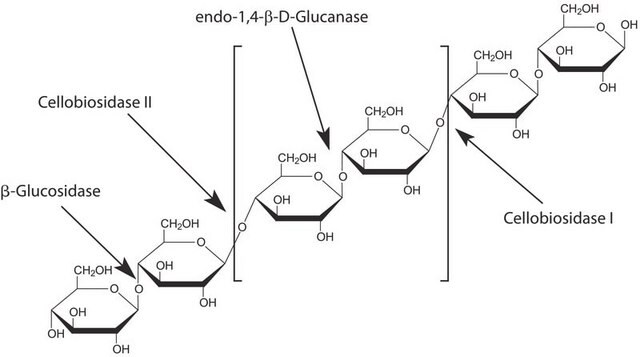C1184
Cellulase from Aspergillus niger
powder, ≥0.3 units/mg solid
Synonym(s):
1,4-(1,3:1,4)-β-D-Glucan 4-glucanohydrolase
About This Item
Recommended Products
form
powder
Quality Level
specific activity
≥0.3 units/mg solid
greener alternative product characteristics
Design for Energy Efficiency
Learn more about the Principles of Green Chemistry.
sustainability
Greener Alternative Product
greener alternative category
, Enabling
storage temp.
2-8°C
Looking for similar products? Visit Product Comparison Guide
Related Categories
General description
Cellulase belongs to the family of glycoside hydrolase, which is secreted by various cellulolytic microorganisms.
Application
Biochem/physiol Actions
Unit Definition
Other Notes
substrate
Signal Word
Danger
Hazard Statements
Precautionary Statements
Hazard Classifications
Resp. Sens. 1
Storage Class Code
11 - Combustible Solids
WGK
WGK 1
Flash Point(F)
Not applicable
Flash Point(C)
Not applicable
Personal Protective Equipment
Certificates of Analysis (COA)
Search for Certificates of Analysis (COA) by entering the products Lot/Batch Number. Lot and Batch Numbers can be found on a product’s label following the words ‘Lot’ or ‘Batch’.
Already Own This Product?
Find documentation for the products that you have recently purchased in the Document Library.
Customers Also Viewed
Protocols
To standardize an enzymatic assay procedure of cellulase.
Our team of scientists has experience in all areas of research including Life Science, Material Science, Chemical Synthesis, Chromatography, Analytical and many others.
Contact Technical Service








